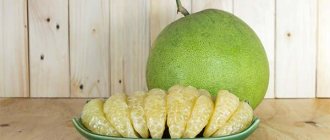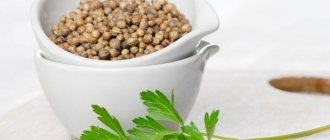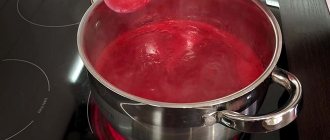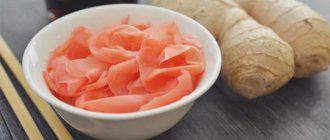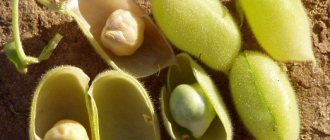Despite the fact that papaya is an exotic fruit that is grown in countries with a tropical climate, it has long been common on the shelves of our stores. It is eaten not only raw, but also used to prepare a variety of salads, snacks, and desserts. Many people fell in love with the fruit for its unique taste and aroma, including people who have problems with the gastrointestinal tract. Therefore, in this article we will try to figure out whether papaya can be included in the menu for pancreatitis.
This disease, in which the pancreas tissue becomes inflamed, is becoming increasingly widespread (it affects up to a third of the female population and up to a seventh of the male population). And one of the effective ways to combat this disease, along with medical and surgical treatment methods, is a balanced diet. Papaya can be one of the fruits that, due to its rich composition, will help to diversify it.
Composition and beneficial properties of the fruit
Papaya has a low calorie content, plus it is not very sweet, which means that in order to absorb nutrients from it, you will not need to activate the pancreas in order to produce additional amounts of insulin. And this is very good in conditions of organ inflammation.
The pulp of this fruit is able to neutralize the excess activity of gastric juice, so it can be used for diseases such as:
- gastritis,
- diabetes,
- pancreatitis,
- reflux syndrome.
Remember: you can only eat fully ripened fruits. They can be distinguished by their smooth skin, yellow color, soft but elastic consistency. The choice of this fruit must be especially careful.
Papaya has a healing effect on the human body due to its unique composition, because every hundred grams of its fruit contains:
- 0.47 g protein,
- 0.26 g fat,
- 10.82 g carbohydrates,
- 1.7 g dietary fiber,
- 88.06 g water,
- 2 mcg alpha-carotene,
- 0.274 mg beta-carotene,
- 47 mcg vitamin A,
- 0.023 mg B1,
- 027 mg B2,
- 0.038 mg B6,
- 2.6 µg K,
- 0.357 mg PP,
- 60.9 mg C,
- 0.3 mg E,
- 182 mg potassium,
- 20 mg calcium,
- 21 mg magnesium,
- 8 mg sodium,
- 10 mg phosphorus,
- 0.25 mg iron,
- 0.04 mg manganese,
- 45 mcg copper,
- 0.6 mcg selenium,
- 0.08 mg zinc,
- 7.82 g sugars (mono- and disaccharides),
- 4.09 g dextrose (glucose),
- 3.73 g fructose,
- 0.01 g arginine,
- 0.049 g aspartic acid,
- 0.018 g glycine,
- 0.033 glutamic acid,
- 0.047 g omega-3 fatty acids,
- 0.081 g saturated fatty acids,
- 0.072 g monounsaturated fatty acids,
- 0.058 g of polyunsaturated fatty acids.
The energy value of 100 g of raw papaya fruit is 43 kcal.
Ways to eat papaya
Now we will describe how to eat papaya raw and how to cut it more conveniently. Everyone can choose a method to their liking.
- Cut the soft fruit in half lengthwise. The seeds are extracted (this is easy to do with a spoon). Now you can simply eat papaya with a spoon, like you sometimes eat watermelon or kiwi. If the fruit is really ripe and soft, it will be convenient to eat it with a spoon.
- Also cut the papaya lengthwise and remove the seeds. And then cut each half lengthwise into 4-5 slices, like a watermelon. Eat like that. For convenience, you can make cuts to the skin and bite off pieces.
- We do the same as in the second method, but peel the skin from each slice and cut the papaya into slices into a plate. You can eat it with your hands, a fork or wooden skewers.
- Papaya is mostly eaten raw, but it can also be cooked (more on that later).
- Papaya improves digestion, so eat it correctly before the main meal, about 30 minutes before.
- Don’t rush to throw away papaya seeds. Dry them and use them as a spice instead of pepper; they are much healthier than pepper.
- Papaya goes well with lemon juice. Cut it into slices into a plate (method 3) and sprinkle with fresh lemon juice.
- Papaya is capable of ripening. The ripe fruit is soft, yellow, sometimes with an orange blush, without any dark spots. The smell should not be pungent.
- A huge amount of beneficial substances of this fruit come into effect only if the fruit is ripe. In addition, moderation is important. Excessive consumption of papaya can be harmful.
Eating papaya for pancreatic disease
The possibility of eating this exotic fruit for pancreatitis depends on the phase in which the disease is:
- spicy,
- chronic remission,
- exacerbation of chronic
And if in the first and third this is unacceptable, then in the second it is quite possible and even useful. It would be best for him to find out from his attending physician what phase the disease is in at a certain point in time. After all, it is not always possible to determine this on your own, especially in transition periods.
Acute phase of pancreatitis
During this period, the diet should perform a number of important tasks:
- prevent worsening of the condition,
- prevent destruction of the pancreas,
- normalize the functioning of the organ,
- reduce the intensity of mechanical and chemical damage to the mucous membranes of the stomach and duodenum,
- prevent fatty degeneration of the liver and pancreas.
The first day or three from the beginning of the acute phase of the disease or exacerbation of its chronic course, a person is prescribed rest and hunger. At this time, it is only permissible to drink certain liquids:
- jelly,
- rosehip decoction,
- green teas (not strong),
- some types of non-carbonated mineral waters (Slavyanskaya, Naftusya, Essentuki No. 17).
As soon as the intensity of the pain syndrome subsides and after the period indicated above, you can begin to add some fruits to the menu. They are able to provide the body with all the necessary substances, without particularly loading the inflamed pancreas.
Not every fruit is suitable for organizing a gentle diet, plus there are reservations about what type of processing a particular fruit should undergo. If we talk about papaya, doctors do not recommend various exotic delicacies, including the fruit discussed in this article, in the acute period, as well as during exacerbation of chronic pancreatitis.
Chronic course of the disease
The diet is a difficult test for many people who are prescribed it, because it requires giving up their usual lifestyle and way of eating. In pancreatitis, especially acute, this is especially pronounced. And the chronic form of this disease, although it requires compliance with some restrictions, however, allows patients to make their table quite varied.
Doctors do not recommend fruits that fall under the following characteristics:
- sour,
- bitter,
- cloying.
Ripe papaya fruits do not fit any of the above points. Naturally, it cannot be abused. The danger of this fruit, like other exotics, lies elsewhere, namely in the possibility of allergization of the body in response to an unfamiliar delicacy.
Preference should be given to papaya dishes that have undergone some culinary processing:
- stewed,
- baked,
- mashed,
- crushed,
- steamed.
You should also not eat foods that are too hot or cold.
How to cook papaya
- Choose a ripe fruit.
- Cut the papaya in half and remove the seeds. You can discard the seeds or dry them on a baking sheet for later use as a spicy seasoning for salads or meat. Use a knife to peel off the skin. Cut the pulp into slices and place in a beautiful bowl. Eat fruits with or without lemon juice.
- Use a large spoon to core the papaya along with all its seeds. Fill the cavity with a salad of chopped fruit. You can use bananas, kiwis, oranges and berries of your choice. Add honey, yogurt or cream.
- Take a large papaya fruit and cut several pieces. Insert a wooden popsicle stick into each one. Place in the refrigerator for several hours. This will make a great treat for hot summer weather.
- Place finely chopped pieces of fruit in your favorite chicken, tuna or shrimp lard. It will exquisitely sweeten it and add exoticism not only in taste, but also in appearance.
- You can cook papaya on the grill by cutting it into thin strips. Determine readiness by the appearance of ruddy stripes. Turn the pieces over and keep on the fire on the other side. You will have a great healthy and low calorie snack.
Recipes for papaya dishes allowed for pancreatitis
Here are several recipes using this exotic fruit, which are approved for consumption in the chronic phase of pancreatic inflammation.
Recipe No. 1: Papaya boats
Ingredients:
- four papaya fruits,
- 200 g Feta cheese,
- 50 g olives, pitted,
- 10 black grapes.
Papaya fruits are cut in half or into four parts, peeled and seeds removed.
The cheese is kneaded with a fork, the olives are finely chopped and added to it. Then these two ingredients are mixed.
The grapes are each cut into four parts and mixed with cheese and olives. The resulting mixture is used as a filling for papaya fruits.
The dish is baked for 30 minutes.
Recipe #2: Papaya Jelly
Ingredients:
- 600 g cottage cheese,
- 250 ml cream,
- three tablespoons of gelatin,
- 200 ml water,
- 100 g powdered sugar,
- one lime,
- three packets of vanilla,
- two papaya fruits.
Ripe papayas are peeled and finely chopped, sprinkled with 1 teaspoon of freshly squeezed lime juice, and then mixed together.
In another container, gelatin is filled with water. As soon as it swells, the vessel is placed on low heat, and with constant stirring, without allowing the water to boil, the gelatin is diluted, after which the resulting liquid is cooled.
Cream (10%), cottage cheese, vanillin and powdered sugar are mixed in one container. A cooled gelatin solution is also poured here. The mixture is whipped using a mixer, papaya is added to it, all this is placed in pastry molds and put in the refrigerator, where it will sit until it completely hardens.
How to peel and eat papaya
When you first get acquainted with tropical exotics, the question of how to eat papaya is inevitable. There is nothing complicated.
How to clean and eat
Only the pulp of the fruit is edible. They consume it like a melon:
- wash;
- cut lengthwise in half (especially large specimens - into quarters);
- Using a tablespoon or dessert spoon, remove fibers with seeds.
The remaining pulp is processed in different ways:
- cut or remove with a spoon from the peel;
- cut off the peel and cut into slices;
- cut into pieces on the skin of the segments, then carefully cut off the bottom onto a plate.
They eat directly from the halves with a spoon, fork, or holding skewers stuck into the pieces.
Culinary assortment
You can taste fresh papaya in a salad, as a smoothie or juice. In processed form, these are jams, marinade, soft ice cream. In Thailand, tourists are treated to the number one national dish – the fiery “Tam Som” salad. These are dried shrimp flavored with garlic, chili pepper, and green papaya. Some “life hacks” from residents of the country will be useful at home:
- Ripe papaya, sprinkled with juice or green juice, replaces a full breakfast.
- Particularly good with exotic seafood.
- A spoonful of juice or a couple of pieces of fruit are added to the broth to make the meat melt in your mouth.
- For variety, the fruit is combined with lime or lemon juice.
- Green fruits are added to fish, meat dishes, and soups. Before cooking, cut them to drain the liquid. The pulp can be fried, stewed, boiled. The pieces are baked like shish kebab or stewed like zucchini.
A traditional Thai dish is papaya with meat, rice and spices. Fruits of medium ripeness make the baked dish sophisticated and refined.
How to store
Almost all tourists bring this exotic as a gift or for themselves. The question of how to preserve papaya at home arises head on. Fresh fruits are stored, like melons, in the refrigerator. But only two weeks. Dried or dried fruit does not spoil for months and is beneficial.
Use in folk medicine
Papaya is used in various traditional medicine recipes. To remove an abscess, remove the seeds from an unripe papaya, scoop out the pulp and apply it to the abscess.
For hyperthermia, apply a piece of green papaya leaf to your forehead and tie it. Boil dry or fresh papaya leaves, cool and wash the feverish child.
To get rid of intestinal helminths, it is enough to give an infected child or person 5 papaya seeds to eat. Or take a small tomato jar, fill it with papaya grains, grind them into powder or into a paste if they are fresh. Squeeze out the juice, which will later collect into honey. Shake well, take 1 tbsp. three times a day for five days.
Papaya is an antihypertensive and cardiovascular regulating agent. Mix three papaya leaves, three handfuls of jujube leaves and add 5 liters of water. Boil for 10 minutes and take one glass three times a day.
In case of malaria, take one glass of herbal tea made from fresh papaya leaves three times a day. To do this, take three wide papaya leaves, add more than four liters of water, two handfuls of western cassia. Boil for 30 minutes and take for four days.
For coughs and bronchitis, wash the papaya root and boil it in sweet water with honey. Take 0.5 cups three times a day, long before meals.
In case of otitis, grind papaya flowers, place them in a cotton cloth and squeeze the juice into the ear. Repeat the procedure three times a day.
To heal wounds, wash a fresh leaf and apply directly to the wound, secure with a bandage.
Fermented papaya has powerful antioxidant properties. It is ideal against oxidative stress syndrome. This is an excellent solution for getting rid of tobacco or alcohol addiction. Fermented papaya protects against intellectual stress and poisoning.
Fermented papaya extract has an immunostimulating effect. It allows you to significantly strengthen the natural protective function of the body.
Papaya is very popular as an anti-aging remedy. It is very rich in amino acids, which have antioxidant and immunostimulating properties that protect against aging.
Papaya contains enzymes that smooth the top layer of skin, eliminating wrinkles. The papaya mask is very popular. To do this, wash and peel the papaya. Mash 2 tbsp thoroughly. pulp and mix with 1 tbsp. crushed oatmeal. Apply the resulting mixture to the skin for 10 minutes. Then rinse with warm water using a soft glove.
What does papaya look like?
Papaya salad
Products:
Preparation:
Finely chop the shallots, chili and mint, mix them in a deep bowl. Add vinegar, sugar and fish sauce there. In another bowl, mix the watercress and chopped lettuce leaves, place them on a dish, and top with the greens from the first bowl. Then mix the papaya and carrots cut into strips and arrange them beautifully on top of the salad. Pour all the liquid from the first bowl. Decorate with herbs and nuts. Can be used as a side dish for meat dishes.
